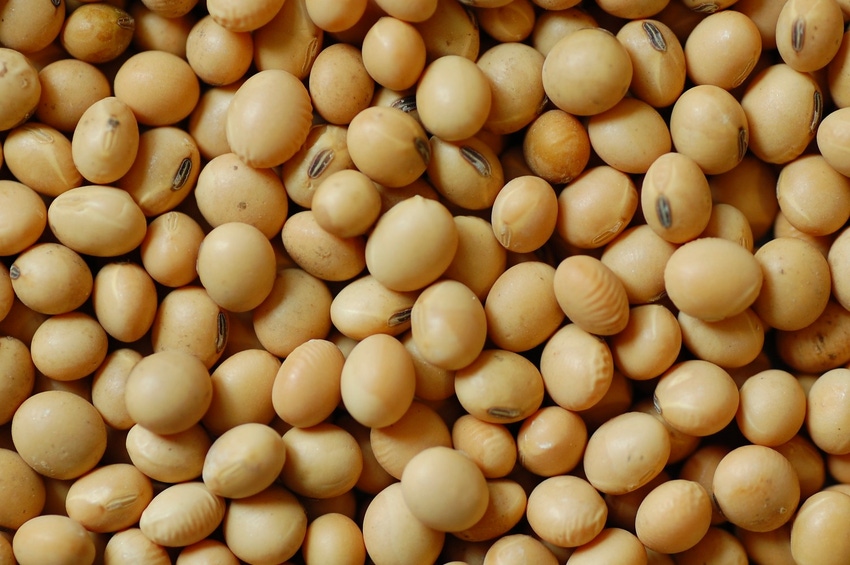USSEC CEO notes that since 1980, U.S. farmers have reduced energy use by 42% and emissions by 41%.
June 16, 2020

U.S. soybean customers around the world are demanding sustainably produced soybeans, and to uphold that banner, U.S. farmers are constantly adopting innovations to ensure their supply meets and exceeds those expectations, according to Jim Sutter, chief executive officer of the U.S. Soybean Export Council (USSEC).
Sutter delivered that message to more than 370 international attendees during the annual International Grains Conference 2020, a virtual event that assembled experts to discuss the latest market developments in the grain, oilseed and rice sectors.
During the conference, Sutter gave a keynote address to kick off the “Climate Change & Integration in the Grains Value Chain” panel. The address focused on how sustainable farming practices are foundational to the growth and production of U.S. soy and how farmers are doing more with less to help meet the growing food needs for a burgeoning population.
“U.S. soybean farmers are constantly innovating to ensure their supply meets and exceeds the demand by mitigating climate change through safe, sustainable farming practices and by providing essential protein and nutrition to help feed a growing population,” Sutter said. “Efficiency and conservation practices used by our farmers are not only helping preserve the planet’s resources for future generations but are also helping to make U.S. soy the preferred choice for food, feed and fuel in a world where consumers across the value chain demand no less.”
U.S. soybean farmers have a long history of creating and participating in programs to help preserve wildlife habitats and improve biodiversity. Always looking to the future, they regularly employ strategies like conservation tillage, crop rotation and cover crops to maintain soil health and maximize the consistent quality of their harvests. Modern tools like moisture sensors, smart irrigation, autonomous and GPS-enabled tractors, drones and satellite imagery help U.S. soybean farmers produce a valuable and reliable harvest while reducing their use of natural resources.
These achievements, according to Sutter, have a clear and quantifiable impact on environmental sustainability. Statistics show that since 1980, U.S. farmers have reduced energy use by 42% and reduced emissions by 41%. The U.S. has also gained 1.45 million hectares of forest land in the past 100 years while significantly reducing farmland by 23.9 million hectares over the past 50 years.
The U.S. soy industry also worked together with a multi-stakeholder group made up of consumers from around the world, non-government organizations (NGOs) and famers to jointly develop the independently audited U.S. Soy Sustainability Assurance Protocol (SSAP). SSAP is a certified aggregate approach audited by third parties that verifies sustainable soybean production at a national scale. Customers can refer to the SSAP to help meet their own corporate social responsibility needs and consumer expectations. Because U.S. soy is verified sustainable under the SSAP, purchasers have a competitive advantage when buying U.S. soy. For example, it has been positively benchmarked against the European Feed Manufacturers Assn.'s (FEFAC) soy sourcing standards, and it was approved by the Tokyo (Japan) Olympic Procurement Committee for soy sourcing at the upcoming Olympic Games, now planned for 2021.
SSAP guidelines cover today’s regulatory obligations regarding sustainable practices, but they also call for continuous improvement. Every day, U.S. soybean farmers find new ways to be more efficient and environmentally sound. Along those lines, Sutter explained that U.S. soy has established yield and sustainability goals for the next five years.
Based on benchmarks starting in 2000, U.S. soybean producers aim to accomplish the following by 2025:
Reduce land use impact by 10% (acres per bushel);
Reduce soil erosion an additional 25% (acres per bushel);
Increase energy use efficiency by 10% (Btu per year), and
Reduce total greenhouse gas emissions by 10% (measured by pounds of carbon dioxide-equivalent gases emitted per year).
“The U.S. soy industry is focused on constantly growing and improving to develop solutions to today’s biggest problems,” Sutter said. “Ultimately, U.S. soy farmers are focused on helping both people and the planet to prosper – delivering sustainably produced, high-quality protein to fuel nourishment and to help preserve the Earth for generations.”
You May Also Like

.png?width=300&auto=webp&quality=80&disable=upscale)

